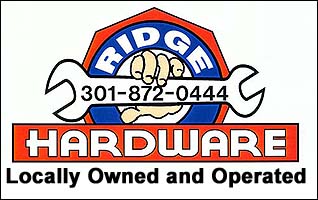Program to Upgrade Septic Systems in High Demand; Installed Systems Now Cutting Nitrogen Pollution by 25,000 Pounds per Year
BALTIMORE (December 15, 2009) – The Maryland Department of the Environment will now prioritize funding for septic system upgrades toward those systems that pose the greatest threat to clean waterways and drinking water. Effective January 1, 2010, MDE will also establish an income-based sliding scale to ensure septic upgrade grants are fairly distributed to homeowners with the most need.
There are approximately 420,000 septic systems in Maryland. Of these, 52,000 systems are located within the “Critical Area,” land within 1,000 feet of tidal waters that is vital for water quality and wildlife habitat. The typical septic system does not remove nitrogen, instead delivering about 30 pounds of nitrogen per year to the groundwater. An upgraded, nitrogen-removing septic system cuts a system’s nitrogen load in half.
Nitrogen is the most serious pollutant in the Chesapeake Bay and Maryland waterways. The Bay Restoration Fund funds wastewater treatment plant upgrades, cover crop plantings, and septic upgrades to significantly reduce this pollution.
Maryland Department of the Environment Secretary Shari T. Wilson said: “The high demand for Maryland’s septic upgrade program is great news for our drinking water, the Chesapeake Bay, and local rivers and streams. This incredibly successful program is key to reaching Maryland’s two-year Chesapeake Bay milestones, which more than double our efforts to reduce nitrogen and clean up the Bay.”
Homeowner demand for septic upgrade grants is at an all time high, attributed in part due to MDE’s intensive outreach starting in fall 2008, as well as Senate Bill 554, which requires all new and replacement septic systems in the Critical Area to include the best available technology for removing nitrogen.
As of September 30, 2009, the program has upgraded 1,778 septic systems—reducing nitrogen pollution to surface water and groundwater by over 25,000 pounds per year. At this time last year, 375 upgraded systems had been installed through the program. In April, May, and June of 2008 the Department received 120 applications for septic system upgrades; for the same period in 2009, MDE received 1,261 applications.
MDE’s septic upgrade program annually receives an estimated $8 million in funding, enough to cover about 600-700 septic upgrades per year. An average septic system upgrade, plus five years of maintenance, costs approximately $10,000-$13,000. Since 2006, the State has awarded approximately $19 million to homeowners and counties for upgrading septic systems.
MDE estimates that 80 percent of the nitrogen from a typical septic system in the Critical Area reaches surface water, while 30 percent of the nitrogen from a septic system outside the Critical Area reaches surface water. In accordance with State law, the Bay Restoration Fund will now prioritize upgrades as follows: 1) failing septic systems in the Critical Area, 2) failing septic systems outside the Critical Area, 3) non-failing systems in Critical Area, and 4) all other systems, including new construction. MDE continues to award grants to applicants with failing septic systems in the Critical Area, but has waitlisted other applications.
To ensure that grants are available for all repair and replacement septic systems in the Critical Area, and to provide an equitable distribution of the limited Bay Restoration Fund, effective January 1, 2010, grants for upgrading on-site sewage disposal systems will be awarded on a sliding scale based on household income. MDE will reassess the availability of funding for other priorities by July 1, 2010, at which time available funds will then be targeted to applicants from the waitlist.
Through the Bay Restoration Fund, a $30 annual fee is collected from each home served by an onsite septic system. The total estimated program income is $12 million per year. Sixty percent of these funds are used for septic system upgrades and 40 percent are used for cover crops.
Septic systems that do not remove nitrogen have a significant impact on water quality. For example, in 2008, approximately 4,000 new and replacement systems without nitrogen-removing technology were installed in Maryland, resulting in an increase of 12,000 pounds per year of nitrogen discharge reaching the Chesapeake Bay. This annual growth is the equivalent of adding an additional major sewage treatment plant every year (i.e. 500,000 gallons per day sewage treatment plant) with no nutrient removal technology.
Source: Maryland Department of the Environment


